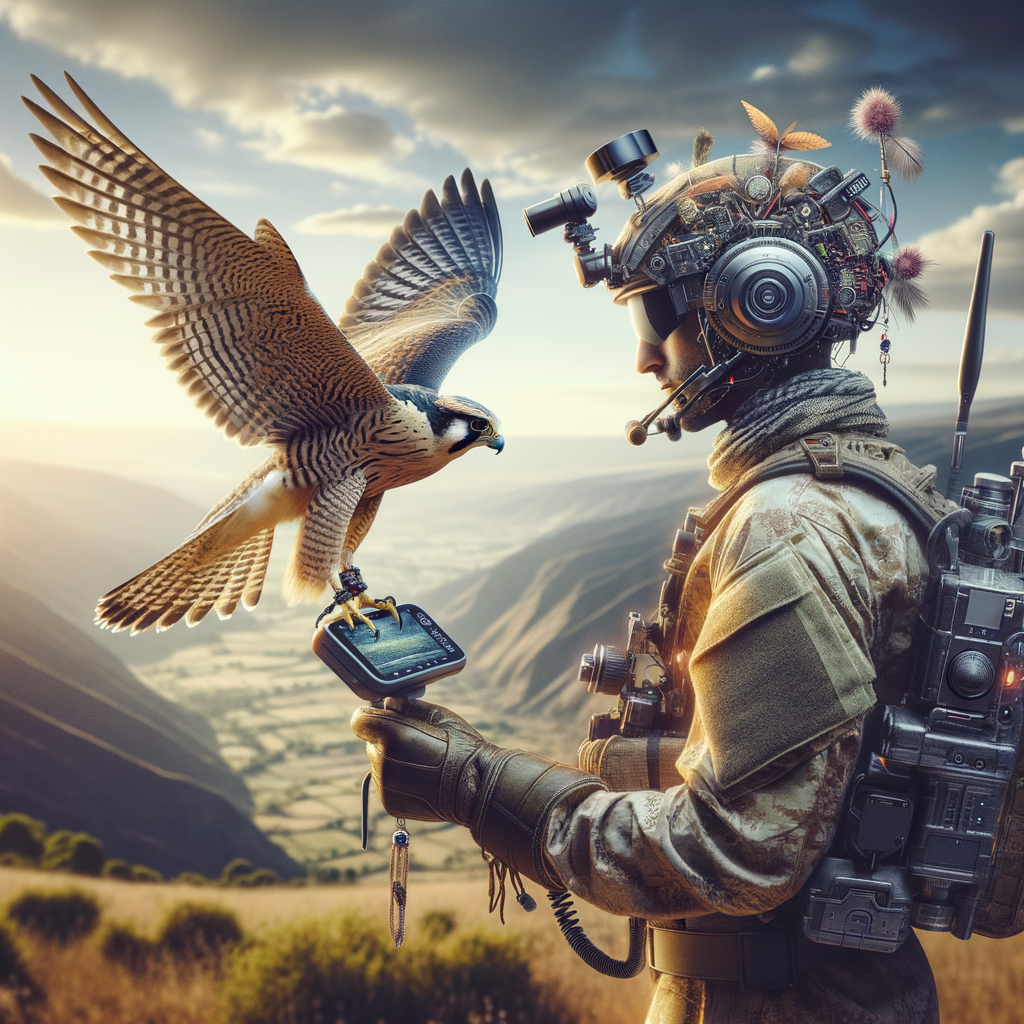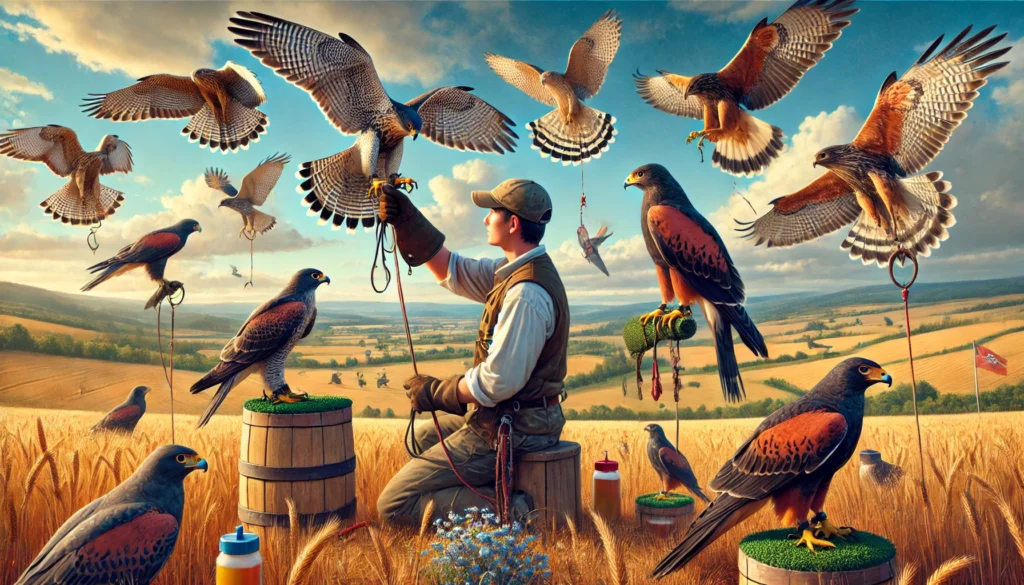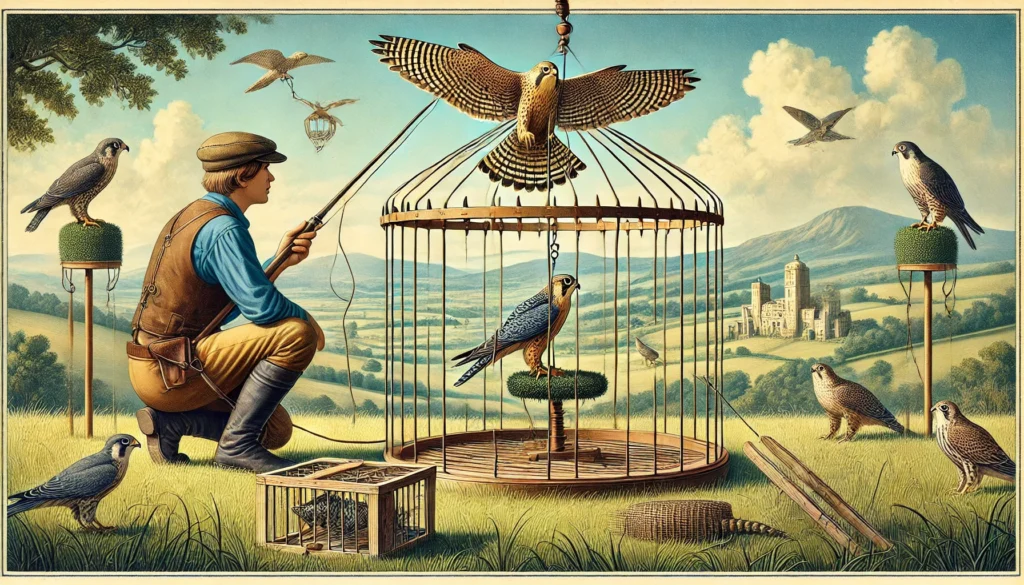Key Insights on Using Technology in Falconry
- Modern Technology in Falconry: Incorporates devices like GPS trackers for bird tracking.
- Enhanced Bird Safety: Technology helps locate lost birds quickly, ensuring their safety.
- Training Efficiency: Gadgets aid in better training methods by monitoring birds’ activities and behaviors.
- Health Monitoring: Devices provide insights into the health and well-being of the birds.
- Increased Engagement: Technology makes falconry more accessible and exciting for enthusiasts.
- Data Collection: Helps in gathering valuable data on birdsâ flight patterns and habits.
- Innovative Apps: Mobile apps dedicated to falconry bring convenience to bird trainers.
- Improved Communication: Tools and apps strengthen the connection between falconers and their birds.
Remember, using technology goes hand-in-hand with traditional falconry practices to enhance and safeguard the age-old art.
Embracing Modern Innovations in Falconry
Imagine yourself standing on the green, rolling hills of Ireland, where the breeze whispers stories of ancient times. Just like the tales of magical creatures and brave warriors that have been passed down through generations, falconry also carries with it a rich history of tradition and majesty. But, just as the Irish have modernized their folklore with vibrant festivals and technology, we at Learn Falconry have embraced modern advancements to elevate the ancient art of falconry to new heights.
In this article, we’re going to explore how cutting-edge technology is harmonizing with the time-honored techniques of falconry to create something truly spectacular. We’re talking about the kind of tech that can track our feathered friends in real-time, analyze flight patterns, and even help in training hawks with pinpoint precision. Think of it as giving an ancient Celtic warrior a futuristic sword â it keeps the spirit alive while adding a dash of modern magic.
So why should you keep reading? Well, if you’re intrigued by how a centuries-old practice can blend seamlessly with the latest innovations, then this is an adventure you won’t want to miss. We’ll dive into how these technological marvels not only preserve but also enhance the experience of falconry for enthusiasts and professionals alike. Let’s soar together through this exciting journey!
Embracing Modern Technology in Falconry
Falconry, the ancient practice of hunting with trained birds of prey, has evolved dramatically over the centuries. Today, the use of technology in falconry has revolutionized the sport and made it more accessible to enthusiasts around the world. Leveraging a range of digital falconry tools, modern falconers can enhance training, ensure the health of their birds, and improve overall efficiency.
Digital Falconry Tools: Enhancing Precision and Efficiency
One of the significant advancements in modern falconry technology is the array of digital tools available to falconers. These tools include apps and software designed to track a bird’s progress, monitor health metrics, and facilitate efficient record-keeping. Training records and progress tracking solutions help falconers maintain detailed logs of their birdsâ training routines and health status, ensuring a systematic approach to falconry.
Drones in Falconry: A High-Tech Assistant
Drones have emerged as valuable assets in falconry. Using drones in falconry allows trainers to simulate flying prey, which helps in honing the hunting skills of the birds. They are used for various tasks, such as lure training, and can even aid in recovering lost birds by providing an aerial view of the terrain. For those interested in advanced training methods, understanding the applications of drones can provide a clear advantage.
Smart Falconry Scale: Precision in Weight Management
Accurate weight management is crucial for the health of a falcon. The smart falconry scale is an innovative tool that helps falconers maintain the optimal weight for their birds, which is vital for their performance and well-being. These scales often come with integrated features that log weight data, ensuring that falconers can easily track changes over time. Explore more about essential falconry equipment to ensure the best care for your bird.
GPS Trackers: Keeping Your Falcon Safe
The integration of GPS trackers in falconry ensures that falconers can always keep track of their birds. These devices allow real-time tracking, which is particularly useful during training sessions and hunts. Advanced telemetry techniques employed in these trackers provide precise location data, giving peace of mind to falconers and enhancing the safety of the birds. Delve into the mechanics of these technologies by exploring GPS Telemetry in Falconry.
The Future of Falconry: Technological Innovation Continues
The future of falconry looks promising with continuous advancements in technology. From virtual reality setups for training to apps that provide comprehensive health monitoring, the landscape of falconry is constantly evolving. These innovations not only improve the experience for falconers but also contribute to the welfare and conservation of these majestic birds. Learn more about what the future holds for falconry.
Incorporating these modern tools does not diminish the traditional aspects of falconry; instead, it enhances the ability to practice this ancient art with greater precision and care. Embracing technology in falconry opens new doors for enthusiasts and helps preserve this fascinating tradition for future generations.
Integrating Technology in Falconry for 2024
Imagine training falcons with the help of advanced tools and technology! Falconry has come a long way, and with the latest tech trends, itâs becoming even more exciting. Let’s dive into some key aspects of how technology is enhancing this ancient practice.
Radar Systems and Bird Flight Patterns
Radar technology is being used to study bird flight. This system captures detailed data on how birds fly, including their speed, height, and path. Hereâs an example of what this looks like:
| Flight Data | Details |
|---|---|
| Speed | Up to 60 mph |
| Altitude | As high as 500 feet |
| Trajectory | Changes in real-time based on weather and other factors |
This data helps falconers predict what their birds might do next, making training and hunting more efficient.
AI-Assisted Falcon Training
Artificial intelligence (AI) is revolutionizing how birds are trained. AI models use data from training sessions to help trainers understand and respond to the birds’ behavior more quickly. These AI tools can analyze a birdâs actions in real-time and suggest the best responses. This not only speeds up the training process but also improves its accuracy.
Digital Twin Simulation
Digital twin simulation platforms create virtual environments that look and feel like the real world. Falcon trainers can use these digital worlds to practice hunting scenarios without needing a real bird. Beginner falconers find this especially useful as they can practice and learn without any risks. It also helps seasoned falconers to fine-tune their strategies.
Using Data Analytics in Falconry
Advanced data analytics is another critical technology helping falconers. By analyzing data on bird behavior, weather conditions, and hunting outcomes, trainers can identify patterns and make better decisions. For instance:
| Factor | Impact on Hunting |
|---|---|
| Weather | Windy conditions can alter bird trajectories |
| Time of Day | Some birds are more active during dawn or dusk |
| Bird Health | Healthier birds perform better in hunts |
Collaboration Tools for Falconers
New collaboration tools are making it easier for falconers to communicate and share their knowledge. Web-based platforms allow them to share data and best practices, helping each other become better trainers.
Smart Falconry Tools
Smart scales and other digital tools are revolutionizing how falconers care for their birds:
- Smart Scales: Track and manage bird weight with extreme accuracy. For example, they can measure from tiny owls weighing 20 oz to larger birds up to 6 lbs.
- Environmental Monitoring: These scales also track conditions like temperature and humidity to ensure the birds are healthy.
| Feature | Description |
|---|---|
| Accuracy | Measures in grams, ounces, and pounds |
| Range | For birds weighing 0.5 kg to 3.1 kg |
| Extra Features | Zero and tare keys, low battery indicator, and adjustable legs |
| Material | Made of stainless steel for easy cleaning |
GPS Tracking and Robotics
Modern tools like GPS trackers help monitor where the birds go, ensuring they stay safe. Robotics, such as drones, mimic prey to enhance training. This robotic training helps birds refine their hunting skills and build their confidence.
Predictive Maintenance and Real-time Data
AI-Powered tools not only assist in bird training but also help maintain equipment used in falconry. For instance, predictive maintenance tools analyze equipment data to predict when something might break down, ensuring that everything works smoothly. Real-time data streams provide insights into bird health and performance during training or hunting.
Drones for Bird Behavior Analysis
Drones are used to gather data on bird flight patterns and behavior. They help create a database of bird signatures which are essential for distinguishing birds from drones, especially around airports, ensuring safety in air travel.
Coming Soon: Smart Falconry Scales and More
Smart falconry scales are set to release soon, and they bring some exciting features:
- Track and Manage Bird Weight: Helps monitor the birdâs health.
- Sync Data: Integration with apps to get a full view of the birdâs condition.
- Pre-orders and Special Offers: Early adopters can get special benefits.
In conclusion, integrating technology in falconry is making training more efficient, helping falconers work smarter, and ensuring the well-being of the birds.
Embracing Technology in the World of Falconry
In 2024, the world of falconry is seeing a remarkable transformation thanks to the integration of advanced technologies.
Key Points:
- Radar Technology: Detailed data from radar systems is being used to study bird flight patterns, helping to predict behaviors and optimize hunting strategies.
- AI-Assisted Training: AI is enhancing the training process, allowing for predictions and real-time data analysis to make sessions more effective.
- Digital Twin Simulation: Virtual environments are being used to simulate hunting scenarios, which is particularly useful for training new falconers.
- Data Analytics: Advanced analytics are identifying patterns in bird behavior and weather conditions, informing better decision-making.
- Collaboration Tools: Web-based platforms are improving communication among falconers by sharing data and best practices.
- Smart Falconry Scales and Digital Tools: These tools track bird health and performance, syncing data seamlessly with apps for comprehensive care and management.
These technological advancements enhance the efficiency and effectiveness of falconry, ensuring that both falconers and their birds benefit from the modern innovations while maintaining the traditional art form. The future of falconry looks brighter with technology leading the way toward smarter, safer, and more efficient practices.
Frequently Asked Questions about Using Technology in Falconry
-
How Does GPS Tracking Enhance Falconry?
Using GPS tracking in falconry helps falconers keep a close watch on their birds even when they are out of sight. GPS devices can be attached to the falconâs leg or back, allowing the falconer to monitor their location via a smartphone or computer. This technology prevents losing the falcon and helps ensure its safety, especially during training or hunting sessions. For more on innovative falconry tools, check out this link. -
What Role Do Drones Play in Falconry Training?
Drones are becoming a vital part of falconry training. They can simulate prey for the falcon to chase, providing more controlled and varied training experiences. This helps in honing the falconâs hunting skills while ensuring safety and control. For more detailed insights into training with modern tools, visit our training with technology page. -
How Are Smart Devices Used for Monitoring Falcon Health?
Smart devices designed for falcons can track health metrics such as heart rate, temperature, and activity levels. These devices help falconers ensure their birds are in peak condition by providing real-time health data. This proactive monitoring can prevent potential health issues before they worsen. Learn more about health monitoring technology here. -
What Benefits Do Falconry Apps Offer?
Falconry apps are designed to aid falconers in various aspects, from keeping track of training sessions to managing feeding schedules. Some apps even provide detailed weather forecasts to help plan safe flying sessions. These apps simplify record-keeping and enhance the overall efficiency of falconry activities. For more on digital solutions, visit our falconry apps and software section. -
Can Virtual Reality Be Used in Falconry Training?
Yes, virtual reality (VR) is an emerging tool in falconry training. VR can simulate different hunting environments, allowing new falcons to practice and develop their skills in a safe and controlled setting. This modern approach to training can replicate real-life scenarios without the risks. Discover more about VR in falconry here. -
What Are the Advantages of High-Tech Falconry Competitions?
High-tech falconry competitions incorporate advanced technologies such as GPS tracking and drones to create more dynamic and engaging events. These innovations help maintain fairness and offer spectators a closer look at the action through live feeds and detailed tracking data. To explore these technological advancements, visit our high-tech competitions page.
Using technology in falconry not only makes the practice safer but also enhances the training and overall experience for both the falconer and the falcon. Explore more about modern falconry techniques here.



